
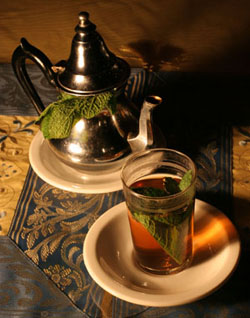
Founded in the 11th century, Marrakech was once the capital of an empire that stretched from Spain to Senegal . In days of old, Marrakech's location on the crossroads of ancient caravan routes from Timbuktu made it a key destination for trade and reprieve for weary sub-Saharan traders carrying gold, salt and slaves bound for Europe . Today, Marrakesh is a reverberating collision of Africa and Europe , west and east, bohemia and high culture, Arab cities and Berber villages. Framed by the snow-capped Atlas mountains , thousand-year-old palm groves, and wrapped in faded red, ochre walls, Marrakech casts a magic spell. One's senses are stimulated by the brilliantly colored spices, entrancing music, rich folds of carpets, delectable cuisine, whirling dervishes, intertwining tile geometries, perfumed gardens shimmering in still waters of reflecting pools.
Sources:
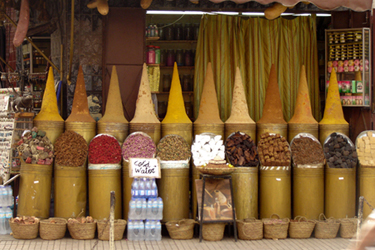
Like many North African and Middle Eastern cities, Marrakech comprised both an old fortified city (the médina) and an adjacent modern city (called Gueliz).
The médina is typically walled, contains many narrow and maze-like streets, and was built by Arabs as far back as the 9th century. Médinas often contain historical fountains, palcaces, and mosques. The monuments are preserved for their cultural significance (and are also a draw for tourists).
Because of the very narrow streets, médinas are free from automobile traffic, and in some cases even motorcycle and bicycle traffic. The streets can be less than a meter wide. This makes them unique among highly populated urban centers. Some médinas were also used to confuse and slow down invaders because of how narrow and winding they are.
Sources:
Djemâa el Fna
Djemâa el Fna is a square and market place in Marrakech's medina quarter. The origin of its name remains unknown : it means Assembly of the dead in Arabic, but as the word djemaa also means mosque in Arabic, it could also mean place of the vanished mosque, in reference to a destroyed Almoravid mosque.
The place remains the main square of Marrakesh , used equally by locals and tourists. During the day it is predominantly occupied by orange juice stalls, youths with chained Barbary apes, water sellers in colourful costumes with traditional leather water-bags and brass cups, and snake charmers who will pose for photographs for tourists. As the day progresses the entertainments on offer change: the snake charmers depart, and in the afternoon and evening the square becomes more crowded, with Chleuh dancing-boys (it would be against custom for girls to provide such an entertainment), story-tellers (telling their tales in Berber or Arabic, to an audience of appreciative locals), magicians, and peddlers of traditional medicines. As dark descends the square fills with dozens of food-stalls, andthe crowds are at their height.
Sources:
La Mamounia
From the website of La Mamounia:
Long considered Morocco's finest hotel, and one of the most magnificent resorts in the world, the Hotel La Mamounia was last renovated in 1986 - a 9-month reconstruction which transformed and enlarged the hotel.
Opened in 1923 and located in the very heart of Marrakech, La Mamounia is set amid idyllic gardens that are almost three hundred years old and surrounded by the city's 12th century ochre-colored ramparts.
For 80 years, La Mamounia has emphasized the great traditions of Moroccan hospitality. We are considered a classic example of the great age of grand hotels of the 1930's, a unique blend of Art Deco and Moorish design.
Conceived in 1922 with one hundred rooms, La Mamounia was enlarged in 1946, 1950 and 1953. In 1986 we undertook a massive, nine-month re-creation, bringing us to today's level of magnificence. In 2000 and 2001, every guest room was updated and redesigned - combining a true Moroccan ambiance with every 21st-century convenience.
La Mamounia's name derives from our gardens, known three centuries ago as "Arset el Mamoun," named for Prince Moulay Mamoun, son of Sultan Sidi Mohamed Ben Abdellah, ruler of Marrakech in the 18th century.
Here in the heart of this Imperial city, royalty, connoisseurs and celebrities gather at the legend called "La Mamounia" to relax in an atmosphere that combines history with enchantment and luxury.
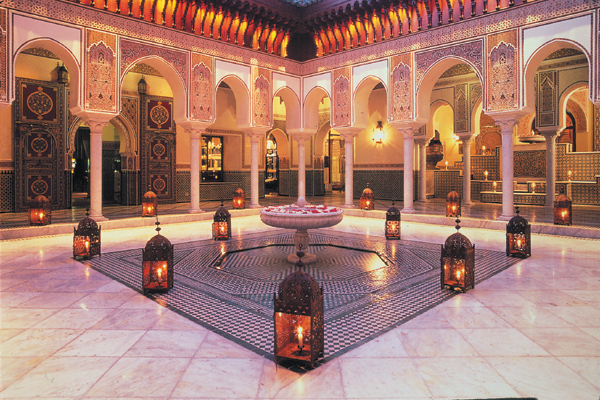
Sources:
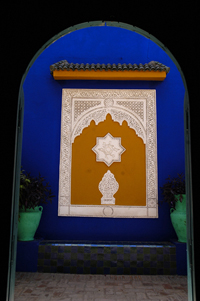
The Majorelle Garden is a botanical garden in Marrakech. It was designed by the expatriate French artist Jacques Majorelle in 1924, during the colonial period when Morocco was occupied by France. Though Majorelle's art is largely forgotten today -- his oeuvre was made up of gentlemanly orientalist watercolors -- the garden he created is his creative masterpiece. A special shade of bold cobalt blue which he used extensively in the garden and its buildings is named after him, Majorelle Bleu.
The garden has been open to the public since 1947. Since 1980 the garden has been owned by Yves Saint-Laurent and Pierre Bergé.
The garden also houses the Islamic Art Museum of Marrakech, whose collection includes North African textiles from Saint-Laurent's personal collection as well as ceramics, jewelry, and paintings by Majorelle.
The garden hosts more than 15 bird species, which can be found only in the area of North Africa .
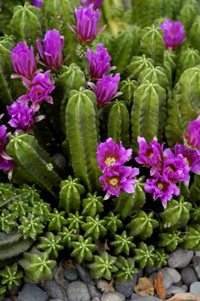
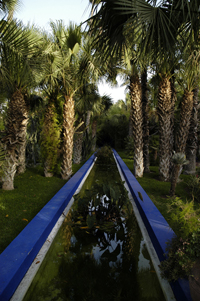
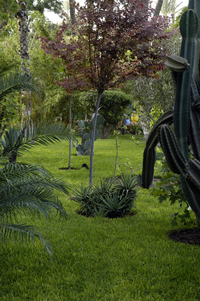
Sources:
Moroccan cuisine has long been considered as one of the most diversified cuisines in the world. The reason is because of the interaction of Morocco with the outside world for centuries. The cuisine of Morocco is a mix of Arab, Berber, Moorish, Middle Eastern, Mediterranean African, Iberian, and Jewish influences. The cooks in the royal kitchens of Fez, Meknes, Marrakech, Rabat, and Tetouan refined Moroccan cuisine over the centuries and created the basis for what is known as Moroccan cuisine today.

The history of Morocco is reflected in its cuisine. Political refugees left Baghdad in the Middle Ages and settled in Morocco , bringing with them traditional recipes that are now common in Morocco but forgotten in the Middle East . We know this because there are striking similarities between a 12th century (Common Era) collection of recipes by Al-Baghdadi, and contemporary Moroccan dishes. A signature characteristic is cooking fruit with meat like quince with lamb or apricots with chicken. Further influences upon Moroccan cuisine came from the Morisco (Muslim refugees) who were expelled from Spain during the Spanish inquisition.
Morocco produces a large range of Mediterranean fruits and vegetables and even some tropical ones. The country produces large quantities of sheep, cattle, poultry, and seafood which serve as a base for the cuisine. Spices are used extensively in Moroccan food. While spices have been imported to Morocco for thousands of years, many ingredients, like saffron from Tiliouine, mint and olives from Meknes , and oranges and lemons from Fez , are home-grown. Common spices include karfa (cinnamon), kamoun (cumin), kharkoum (turmeric), skingbir (ginger), libzar (pepper) , tahmira (paprika), anis seed, sesame seed, kasbour (coriander), maadnous (parsley), zaafrane beldi (saffron) and mint.
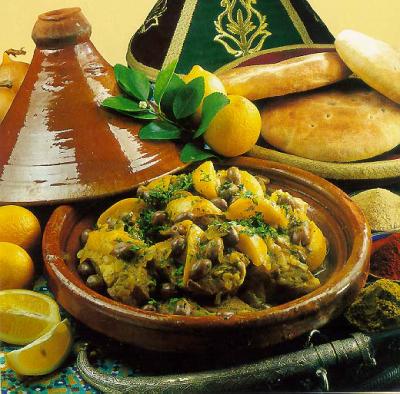
Sources:
Dining Out in Marrakech
Dar Essalam
“In a frame of the thousand and one nights, just a step from famous and tempestuous place Jamaâ El Fna, the DAR Essalam restaurant is Marrakech's first Moroccan restaurant.”
170 Riad Zitoun Kedim
Marrakech
Tel: +212 24 44 35 20 - Fax : (212) 44 44 32 73
Email: contact@daressalam.com
http://daressalam.com
Le Marrakchi
“Hospitality is the principle pride of the inhabitants of this city, the ‘marrakshis'. Here, more than anywhere, you can be certain of the adage: ‘friends of my friends are friends of mine' ”
Place Jemaa El Fna, angle rue des Banques
Marrakech M é dina
Tel: +212 44 44 33 77 – Fax: +212 44 44 90 42
http://www.lemarrakchi.com/
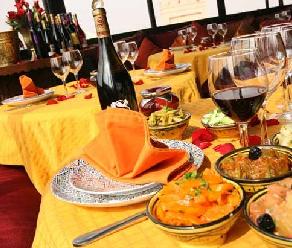
Comptoire Darna
“slices of the 1001 nights in Marrakech, the Red City ”
Tel: +212 24 43 77 02 – Fax: +212 24 44 77 47
Email: comtoirdarna@menara.ma
http://comptoirdarna.com
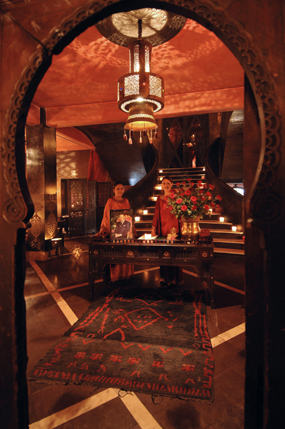
Café Arabe
“The best of Morccan and Italian gourmet with a selection of prestigious wines…”
184 rue el Mouassine
Marrakech Médina
Tel:.+212 24 42 97 28 – Fax: +212 (0) 24 42 97 25
Email: info@cafearabe.com
http://www.cafearabe.com

bô&zin
“An invitation to dream, a mixture of Zen sprit, elegance and simplicity…”
Douar Lahna
Road of the Ourika
40000 Marrakesh
Tel: +212 24 388 012 – Fax: +212 24 388 014
Email: contact@bo-zin.com
http://bo-zin.com
Sources:
Hotels
Les Jardins de la Medina
“A charming hotel providing luxurious, palatial surroundings”
Derb Chtouka, 21 - Kasbah - Marrakech - medina
Tel.: +212 (0) 24 38 18 51 - Fax: +212 (0) 24 38 53 85
E-mail: info@lesjardinsdelamedina.com
http://www.lesjardinsdelamedina.com/
Dar Ayniwen
“A spacious and comfortable house where life is at its finest, opening onto luxuriant greenery”
Tafrata
Circuit de la Palmeraie
Marrakech
Tel: +212 24 32 96 84/85 – Fax: +212 24 32 96 86
Email: ayniwen@manara.ma & infos@dar-ayniwen.com
http://www.dar-ayniwen.com
Palais Sebban
“A palatial hotel to make you relive the Thousand and One Nights”
43 Derb Moulay Abdellah Ben Hsseine
Quartier Laksour
Marrakech
Tel: +212 24 44 02 25 – Fax: +212 24 44 02 28
Email: info@palais-sebban.com
http://www.palais-sebban.com/
Dar les Cigognes
“A Romantic & Chic Boutique Spa Hotel & Luxury Riad”
108 rue de Berima Medina
Marrakech
Tel: +212 24 38 27 40 – Fax: +212 24 38 47 67
Email: info@lescigognes.com
http://lescigognes.com
Hotel El Andalous
“Taste the Eastern civilization refinements and the art of living of Westerners”
President Kennedy Avenue
Marrakech
Tel: +212 24 44 82 26 – Fax: +212 24 44 71 95
Email: contact@elandalous-marrakech.com
http://elandalous-marrakech.com
Sources:
http://www.ilove-marrakesh.com/leshotelsdecharme1_en.html
http://www.ilove-marrakesh.com/leshotels2_en.html
Thank you for visiting!